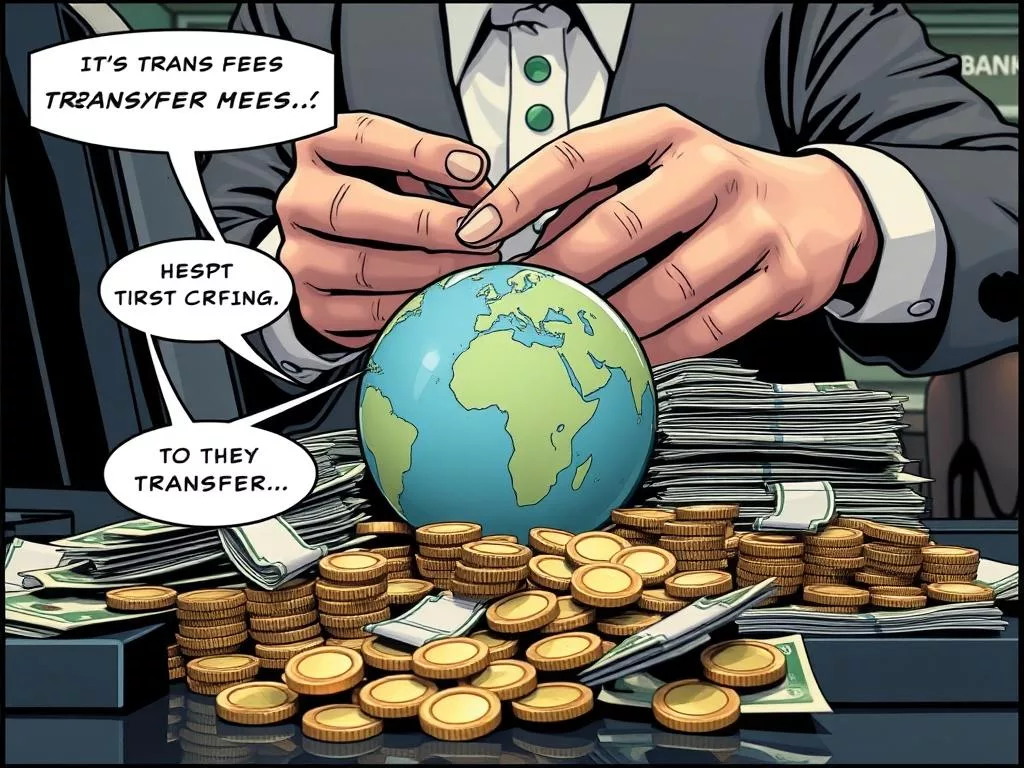Looking into international money transfers shows a big difference between banks and specialist services. Banks use secure but pricey SWIFT transfers. They also add extra fees like correspondent and transaction fees, making them costly. On the other hand, specialist money transfer providers like Wise use local bank networks to cut down on SWIFT fees. This leads to cheaper international wire transfer costs and quicker transfers.
The World Bank’s June 2024 report points out that banks are much pricier, taking 13.40% of the transfer amount as fees. Traditional banks often charge a markup of 4% to 6% or more on the interbank exchange rate for currency conversions. This shows that specialists are not just cheaper but also more efficient. For example, providers like iBanFirst usually offer rates very close to the interbank rate, saving a lot of money, mainly for big transactions. Knowing these differences helps both individuals and businesses make better choices for their international transfers.
Why Banks Are Stil Popular for International Money Transfers
Banks are a big deal in international money transfers because they’re trusted. They offer financial security, thanks to strict rules they follow. This makes people feel safe using their services.

One great thing about banks is that you can do all your banking there. You can send money abroad and also manage your savings, loans, and investments. The SWIFT network helps make sure these transactions are safe and follow the same rules everywhere.
Even though banks charge more for international transfers, people stick with them. This is because of the convenience of online and mobile banking. Banks also spend a lot on marketing to keep their services in mind for customers.
Banks make it easy to send money directly to someone’s bank account. This is important for big amounts or business deals. But, it’s important to know that these transfers can take a few days to a week.
But, banks are facing competition from new services that offer better deals. For example, this guide shows how services like OFX, XE, and Wise can beat banks. These services often have better rates, lower fees, and faster transfers.
In short, banks are important for international money transfers, but new services are changing things. As more people learn about these options, they might choose them over banks. For more ways to send money efficiently, check out this resource.
Drawbacks of Bank Transfers for International Money
Using banks for international money transfers comes with high fees. These fees include transaction costs, fees from correspondent banks, and hidden charges. This makes the total cost much higher.
Banks also get criticized for their unfavorable exchange rates. These rates can be 2-6% higher than what specialist services offer. This means you get less value for your money.

Another issue is the long wait times for bank transfers. This is because of checks and intermediary banks. It can take days, which is a big problem for urgent needs.
Correspondent banking adds more complexity. Mistakes, like wrong bank details, can delay and increase costs. This makes the process even more complicated.
| Aspect | Impact |
|---|---|
| High transfer fees | Increased total cost of transfer |
| Unfavorable exchange rates | Reduced value of transferred amount |
| Correspondent banking | Additional complexity and costs |
| Transfer delays | Longer processing time |
Considering these issues, it’s smart to look at other money transfer services. They often have better rates, lower fees, and faster transfers. For more tips on international transfers, check out this guide.
Guide to International Money Transfers: Banks vs Specialist Services
Banks and specialist services have their own pros and cons for international money transfers. Banks like Wells Fargo and Chase are safe and familiar. But, they cost more and take longer. For example, SWIFT transfers can have fees up to $100, and bank transfers can cost almost 13.40% of the amount sent. They also take three to five days, which isn’t great for urgent needs.
On the other hand, services like Wise, Remitly, and CurrencyFair are cheaper and faster. They can be up to 8% cheaper than banks and transfer money almost instantly. Wise’s guide shows they are safe and regulated, with no hidden fees. Wise has good exchange rates and fees under 1% when you use a bank account.
Specialist services are also more transparent and cost-effective. OFX doesn’t charge transfer fees, and their rates are fair. Other services like Xoom and MoneyGram have low fees but higher rates. Western Union charges under $5 for small transfers but costs vary. For those who value speed, cost, and clarity, specialist services are a better choice.
To learn more and choose the best service for you, check out this guide by Federal Bank. It compares rates and helps find the best option for secure, fast international transfers.

